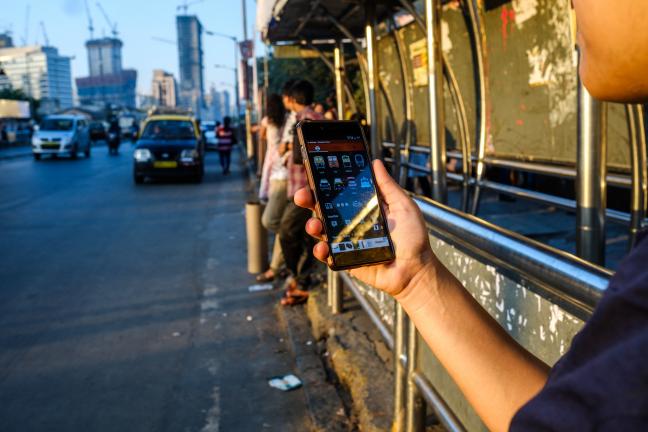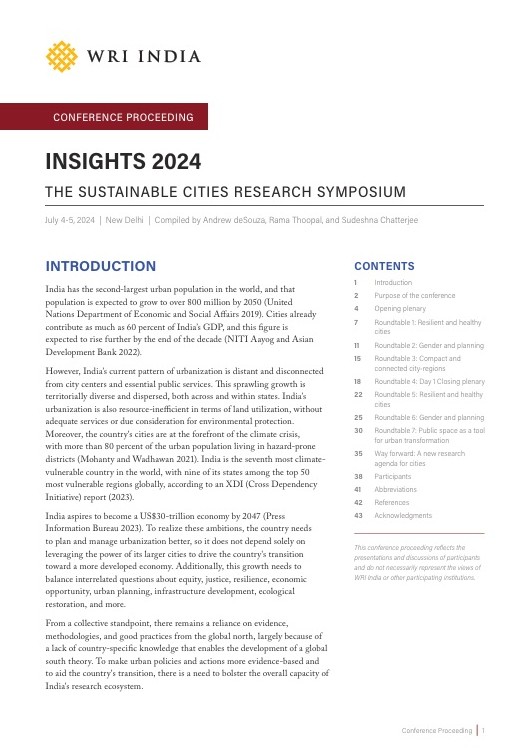Recognising shared mobility as a sustainable form of mobility in urban areas
by -
This blog was originally posted on NIUA.org
United Nations’ data shows that the gradual shift in residence of the human population from rural to urban areas, combined with the overall growth of the world’s population could add another 2.5 billion people to urban areas by 2050. The data further adds that close to 90% of this increase will take place in Asia and Africa (Nations, 2018). As more people are now living a city-based life, challenges of urban transportation are only likely to increase. Twenty one out of the 30 most polluted cities are situated in India and most of the pollution arises out of city-based vehicular emissions and air pollution data finds that 64% of cities globally exceed WHO guidelines (Guardian, 2019). Not only it adds to degraded air quality leading to fatal respiratory diseases, but also aggravates issues such as increased road mishaps, traffic congestion, unequal road space for users, etc.
This brings us to the question: Is it ideal to encourage public transport and active travel, expecting an overnight utopian shift? Pessimistically, it might not be possible due to various challenges such as infrastructure, enforcement, politics, economic factors, etc. But what does one do with the existing private vehicles? Vehicular ownership in Delhi alone, has witnessed a growth from 317 vehicle per 1,000 population in 2005-06, vehicular ownership increased to 598 vehicles per thousand population. According to the Delhi’s economic survey 2018-19, there are 70 lakh two-wheelers in Delhi (Survey, 2019).
Shared Mobility and its benefits
One way to mitigate this issue with existing assets is by practicing shared mobility. It’s not only about the mobility patterns and it’s corresponding changes due to urbanisation but also the change in consumer behaviour. With the evolution of the fourth industrial revolution where new mobility services seem to be a solution, the target group is also different as they are slightly more aware of the environmental impacts with an access to Internet of Things, and are ready to make compromises, while their consumption patterns are also completely different.
Every generation has its own characteristics and Millennials have undergone increased attention in changes in travel demand patterns as they depict a diversity in lifestyles, attitudes and behaviours which affect their auto ownership decisions, and the adoption of new technological solutions. Shared transportation has grown tremendously as a result of renewed interest in urbanism and growing environmental, energy, and economic concerns intensifying the need for sustainable alternatives accompanied by advances in electronic and wireless technologies made sharing assets—and data—easier and more efficient leading to automobile manufacturers, rental car companies, venture-backed start-ups, and city-sponsored programs springing up with new solutions.
There are several benefits of shared mobility such as, provide more mobility choices, offer last mile and first mile solutions, reduce traffic congestion, mitigate various forms of pollution, reduce transportation costs, create equitable access to jobs and other resources, improved efficiency, affordable choices for various income groups, create accessible mobility options for those with limited physical ability. Shared mobility comes with a range of options for various modes such as bike sharing and renting, car/van pooling and sharing, on demand transit services, micro mobility, micro transit, etc.
We are already catering to the reduced emission problems with shared mobility, but it can be even better if we switch to cleaner modes of fuel. It will not only address the degraded air quality issue but also cater to the high upfront cost as a person doesn’t have to bear with such high capital costs when using a shared asset. Planning and managing the charging infrastructure will also be easier, when we know the demand of such combined fleets compared to private asset ownerships. This was planning of infrastructure will be easier and also, the fixed asset utilisation of the infrastructure will also be ensured along with the mobile assets.
Shared Mobility and its challenges
Shared mobility at current times comes with its own challenges, and when these are addressed, one can expect a seamless and smooth urban mobility. In most of the city mobility plans, shared mobility is still not recognised as one of the formal means of mobility. By developing transport planning models to measure exact impacts on commute time, VKT/VMT, economic and social impacts etc needs to be added in such plans along with encouraging proper multimodal integration. Sense of responsibility for different kinds of business models such as vendor attached models, driver cum operator models, multiple entrepreneur models, etc., lacks insurance and security policies for the employees. Understanding insurance issues pertaining to regulation, availability, and affordability across a wide array of existing and emerging shared business and service models. Data sharing, monitoring and security should be ensured. Recognizing the need for consistent public and private sector standards and definitions across a suite of shared mobility service models that guide public policy and distinguish between types of services for users
Shared mobility and its future
Various studies show that the demand for such services is only likely to grow in the future. Traditionally, vehicle sales have been about selling a vehicle once, usually to a single owner. However, times are changing and the transition from vehicle ownership to vehicle usership, is currently being witnessed. People still often need cars in their everyday lives; they just do not necessarily need to use their own vehicles, all the time. Through shared mobility, a car can serve lots of customers, be utilized more fully, and earn revenue for the car maker repeatedly. Connected fleets, and the data they provide, are essential to making these benefits possible. Shared mobility is also great in the long run as it is efficient on costs, it’s a sustainable solution, encourages maximum asset utilisation, has a range of flexibility in prices and choices for a vast set of target group, it also has reduced set of risks as these fleet are usually monitored and high data-based systems are involved.
Views expressed are the author’s own.


